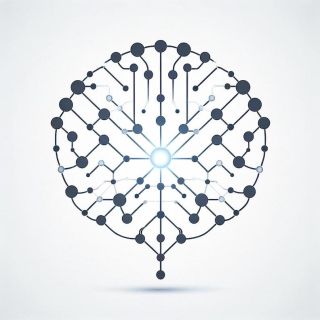Navigating Emotional Triggers: Finding Balance in a Chaotic World
At any moment, someone’s aggravating behavior or our own bad luck can set us off on an emotional spiral that threatens to derail our entire day. So, how can we face these triggers? The answer lies in cultivating an understanding of our emotional responses and developing strategies to respond with less reactivity, allowing us to continue our day without the storm of frustration and anger.
The Evolution of AI: A Sentient Debate
The world of technology is rapidly progressing, and nowhere is this more evident than in the exponential development of large language models (LLMs). These advancements have sparked a captivating conversation about the nature of intelligence, consciousness, and the intriguing possibility that machines could achieve a form of sentience.
As we observe this evolution, it becomes clear that it is leading to a bifurcation in the realm of artificial intelligence. On one hand, we have powerful, cloud-based LLMs that harness vast computational resources to deliver sophisticated language processing capabilities. On the other, the convenient, pocket-sized manifestations of LLM technology offer limited yet impactful interactions in our daily lives.
 The dialogue around AI continues to grow as we explore the potential and implications of LLMs.
The dialogue around AI continues to grow as we explore the potential and implications of LLMs.
A Bifurcated Future: Cloud vs. Pocket LLMs
The distinction between cloud-based LLMs and their embedded counterparts is not merely a matter of size and accessibility; it carries profound implications for the users and industries that depend on these technologies. Cloud systems are powerful and can process massive datasets, unleashing capabilities that bring a new level of proficiency to Natural Language Processing tasks. These LLMs excel at generating human-like text and enhancing various functionalities across sectors, from customer support to creative writing.
In contrast, pocket-sized LLMs, often limited in their processing power, depend on local resources. While they may lack the depth of their cloud-based counterparts, they provide immediate, on-the-go assistance that can greatly enhance user convenience in daily life. Think of virtual assistants on smartphones that help facilitate communication, set reminders, or provide quick answers to questions with just a tap.
Challenges and Opportunities Ahead
With the rapid advancement of these technologies, challenges undoubtedly arise. Ethical considerations regarding machine consciousness and the potential impact on employment and creative professions remain hot topics. While cloud-based LLMs threaten to eclipse human capabilities in various domains, it also opens the door to collaboration between humans and machines. Embracing AI as an ally rather than a competitor could enhance productivity and creativity.
Balancing Human Emotions with Technology
In this intersection of emotions and technology, we must find a balance that respects human feelings while leveraging AI’s potential. The opportunity to align our emotional intelligence with technology can lead to a more harmonious existence, where our triggers do not dictate our responses.
“The future may not belong to those who seek to reject technology, but to those who strive to understand and integrate it into their emotional landscapes.”
Concluding Thoughts
As we step into the future paved with both striking technological innovations and emotional challenges, engaging with these complexities becomes indispensable. The bifurcation of LLMs signifies a broader transformation in how we interact with AI and how we navigate our emotional realities. By cultivating resilience and understanding the nature of our triggers, we can ensure that AI serves to augment our emotional experiences rather than diminish them.
Through mindful engagement with both our responses and the technologies we create, we can craft a future where sentience—both human and artificial—is met with empathy, understanding, and wisdom.
Exploring emotional resilience in an AI-driven world.


 Photo by
Photo by 











